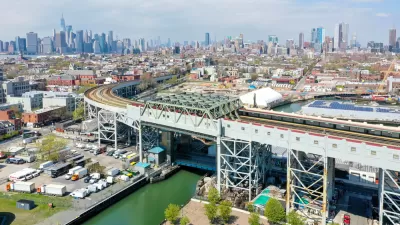This research shows that renters in high-cost cities can be just as prone to NIMBYism as homeowners, even as they theoretically support more housing. This is housing supply's collective action problem.

Common wisdom holds that homeowners in high-cost cities trend toward NIMBYism, while renters favor development. In research for Harvard's Joint Center for Housing Studies, Michael Hankinson puts that assumption to the test.
He writes, "Despite its popularity as a scapegoat, there is no individual-level, empirical data on how NIMBYism operates and among whom." To gather that data, Hankinson turned to the most unaffordable market of all: San Francisco. His polling data suggests that "in high-housing cost cities, renters and homeowners both oppose new residential developments proposed for their neighborhoods."
In some cases, local NIMBYism among renters actually exceeded that of homeowners. "This seeming disconnect between views on citywide and local development policies creates a classic collective action problem for those policymakers who must find ways to reconcile the conflicting views."
Renters in high-cost areas were still more supportive of citywide increases in housing supply, just not on their block. "In fact, renters in expensive cities show just as much support for a 10 percent increase in their city's housing supply as renters in more affordable cities. The main difference between these groups of renters is their NIMBYism."
FULL STORY: When Do Renters Behave Like Homeowners? High Rent, Price Anxiety, and NIMBYism

Alabama: Trump Terminates Settlements for Black Communities Harmed By Raw Sewage
Trump deemed the landmark civil rights agreement “illegal DEI and environmental justice policy.”

Planetizen Federal Action Tracker
A weekly monitor of how Trump’s orders and actions are impacting planners and planning in America.

The 120 Year Old Tiny Home Villages That Sheltered San Francisco’s Earthquake Refugees
More than a century ago, San Francisco mobilized to house thousands of residents displaced by the 1906 earthquake. Could their strategy offer a model for the present?

In Both Crashes and Crime, Public Transportation is Far Safer than Driving
Contrary to popular assumptions, public transportation has far lower crash and crime rates than automobile travel. For safer communities, improve and encourage transit travel.

Report: Zoning Reforms Should Complement Nashville’s Ambitious Transit Plan
Without reform, restrictive zoning codes will limit the impact of the city’s planned transit expansion and could exclude some of the residents who depend on transit the most.

Judge Orders Release of Frozen IRA, IIJA Funding
The decision is a victory for environmental groups who charged that freezing funds for critical infrastructure and disaster response programs caused “real and irreparable harm” to communities.
Urban Design for Planners 1: Software Tools
This six-course series explores essential urban design concepts using open source software and equips planners with the tools they need to participate fully in the urban design process.
Planning for Universal Design
Learn the tools for implementing Universal Design in planning regulations.
Clanton & Associates, Inc.
Jessamine County Fiscal Court
Institute for Housing and Urban Development Studies (IHS)
City of Grandview
Harvard GSD Executive Education
Toledo-Lucas County Plan Commissions
Salt Lake City
NYU Wagner Graduate School of Public Service





























